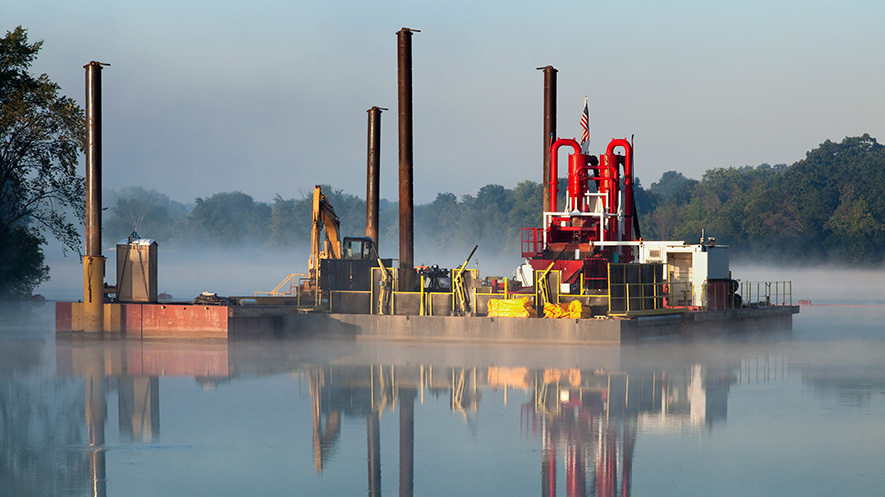Land loss, sea level rise, subsidence, and storms increasingly threaten the economic sustainability of Gulf coastal areas at a time when populations and infrastructure investments are rising. More than two million people live in Louisiana’s coastal zone, many in communities that face increasing risk of flood from storms or even severe rain events. The industries many depend on for their livelihood are no different.
For this vital “Working Coast” to continue to flourish, the changing coastal context must be understood in a way that enables coastal businesses to manage risk, sustain the environment, and leverage opportunities to enhance resilience for the economy, the environment, and the local communities on which they depend.
The oil and gas industry recognize that the critical infrastructure they rely on is vulnerable to this coastal land loss and are partnering with the Institute to pursue nature-based defenses and solutions.
Public-Private Partnership in Port Fourchon
South Louisiana’s Port Fourchon plays a critical national economic security role by providing the U.S. with approximately 18% of its total oil supply and servicing over 90% of the Gulf of Mexico’s deepwater oil production.
As Port Fourchon continues to grow, there are plans to potentially deepen the port’s access channel which could yield more than 20 million cubic yards of sediment. This situation presents a unique opportunity as the port will need to dispose of the material while also desiring additional storm protection.
The Water Institute has proudly worked to create a Public-Private Partnership with the Port, Shell, Chevron, and Danos to determine the best, nature-based way to use the dredged material to protect the port’s critical infrastructure, improve the environment, make communities from Fourchon to Larose more resilient, and yield carbon-capture sequestration benefits.
Sustainable Sediment Management in Lake Charles
The Port of Lake Charles faces issues of large amounts of sediment forcing ongoing dredging of the Calcasieu Ship Channel. While the port has been proactive in finding ways to beneficially use the dredged sediment, the port rightly seeks a sustainable way to better manage sediment through the system.
Currently, the Calcasieu Ship Channel must be dredged yearly to make sure it meets the 400-by 40-foot-deep federally mandated requirements. It’s estimated that the Port of Lake Charles will need to have 97 million cubic yards of disposal capacity for dredged material within the next 20 years.
In August 2017, the port tasked the Institute with providing a better understanding of how sediment moves through the ship channel and to evaluate alternative locations to find long-term and realistic dredge disposal sites.





